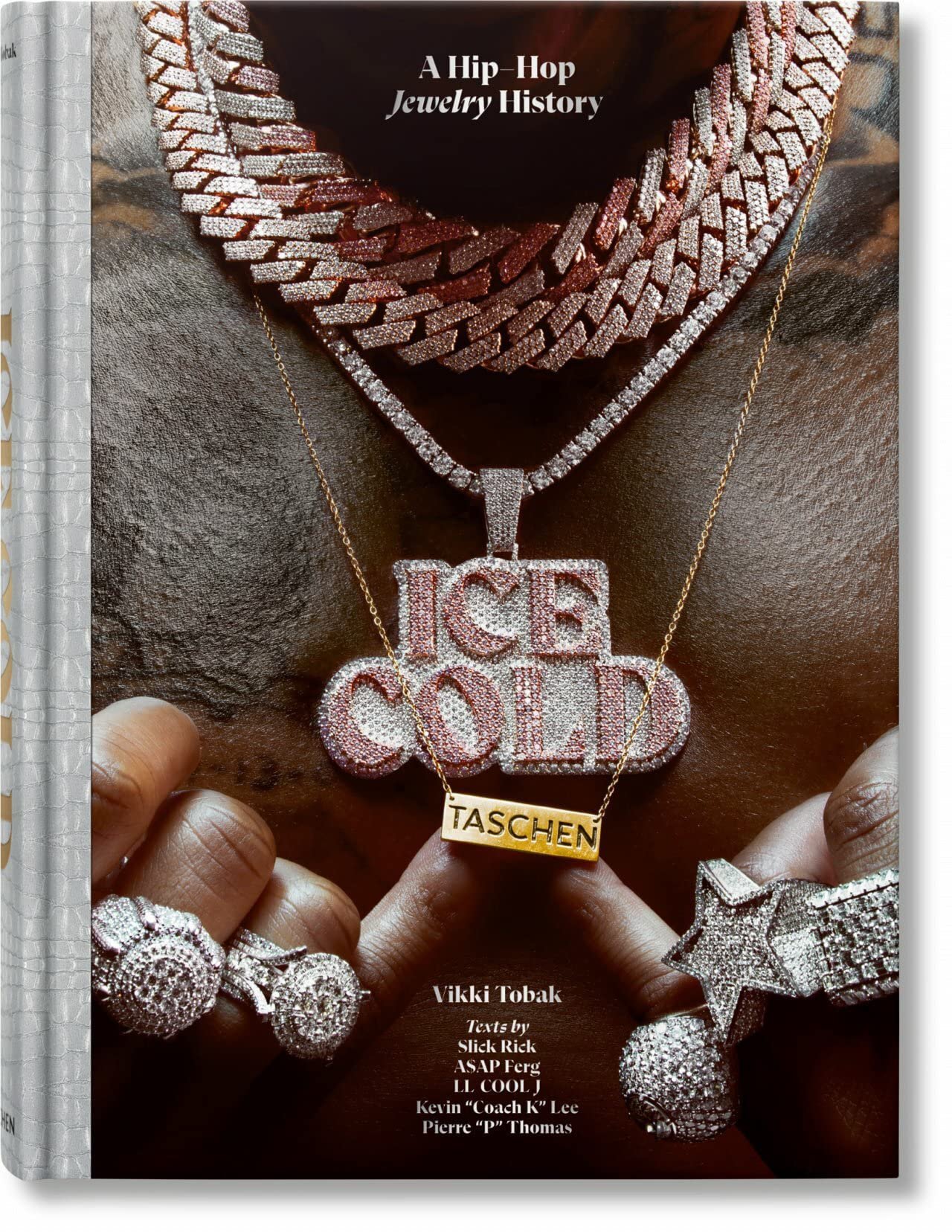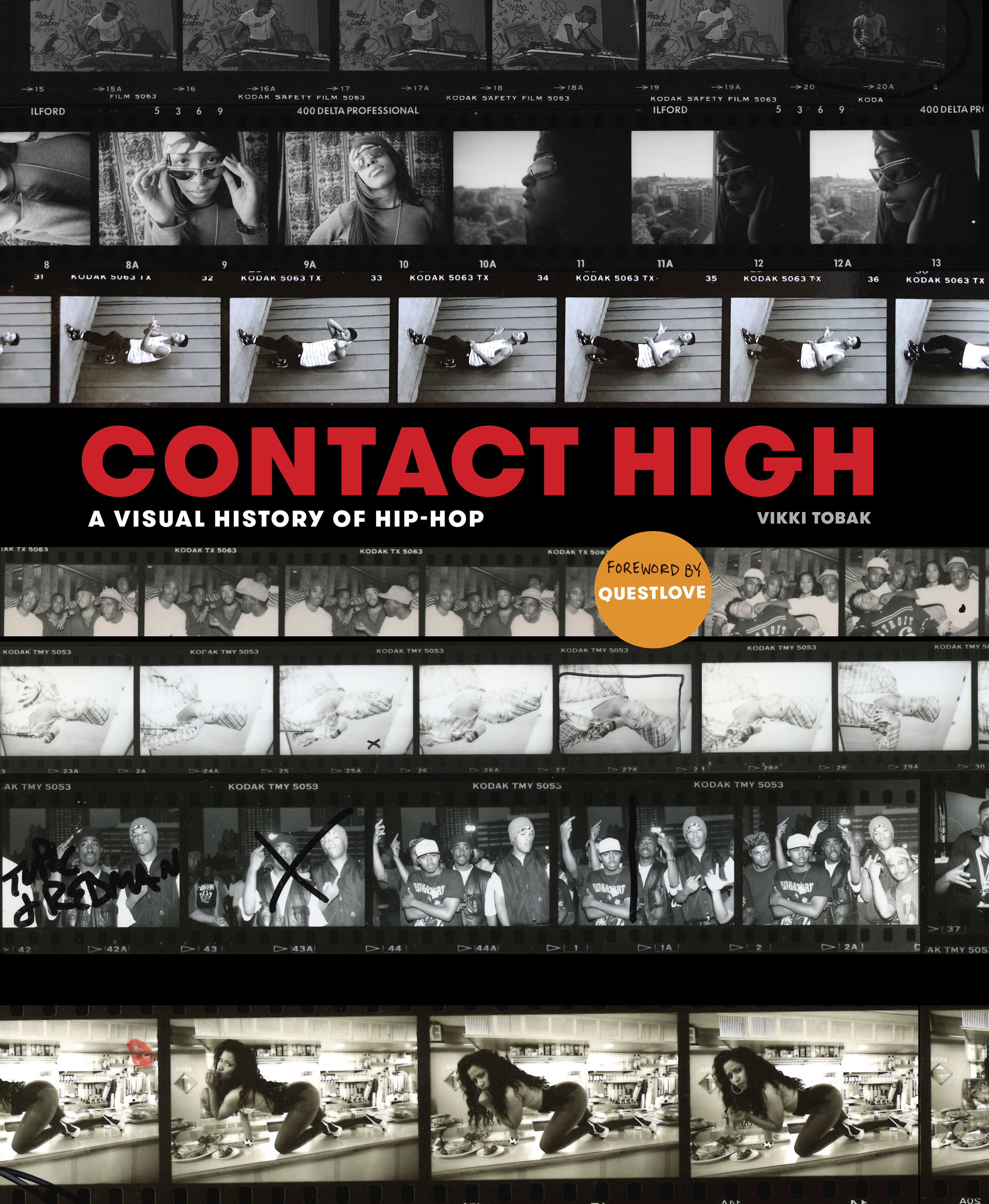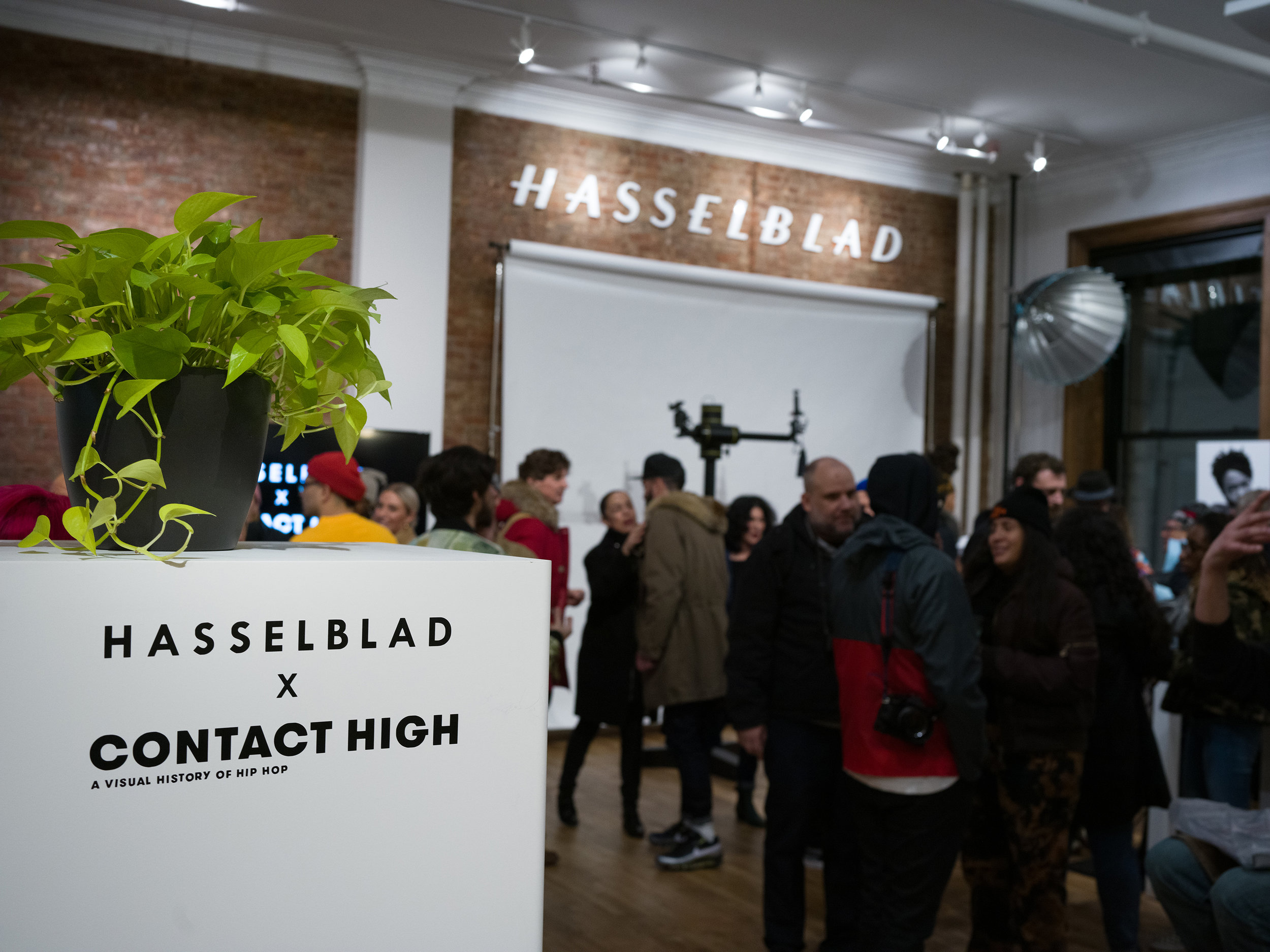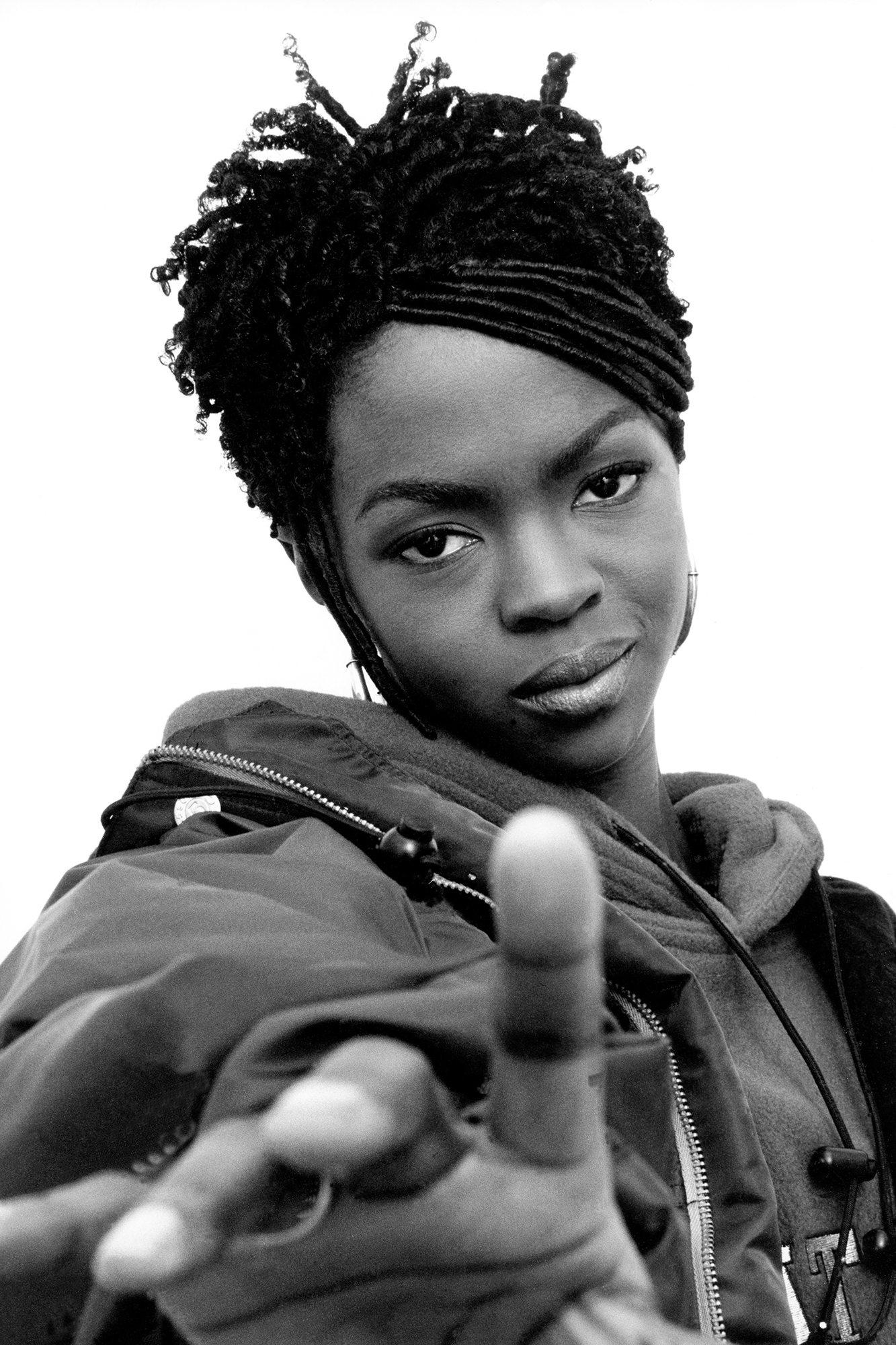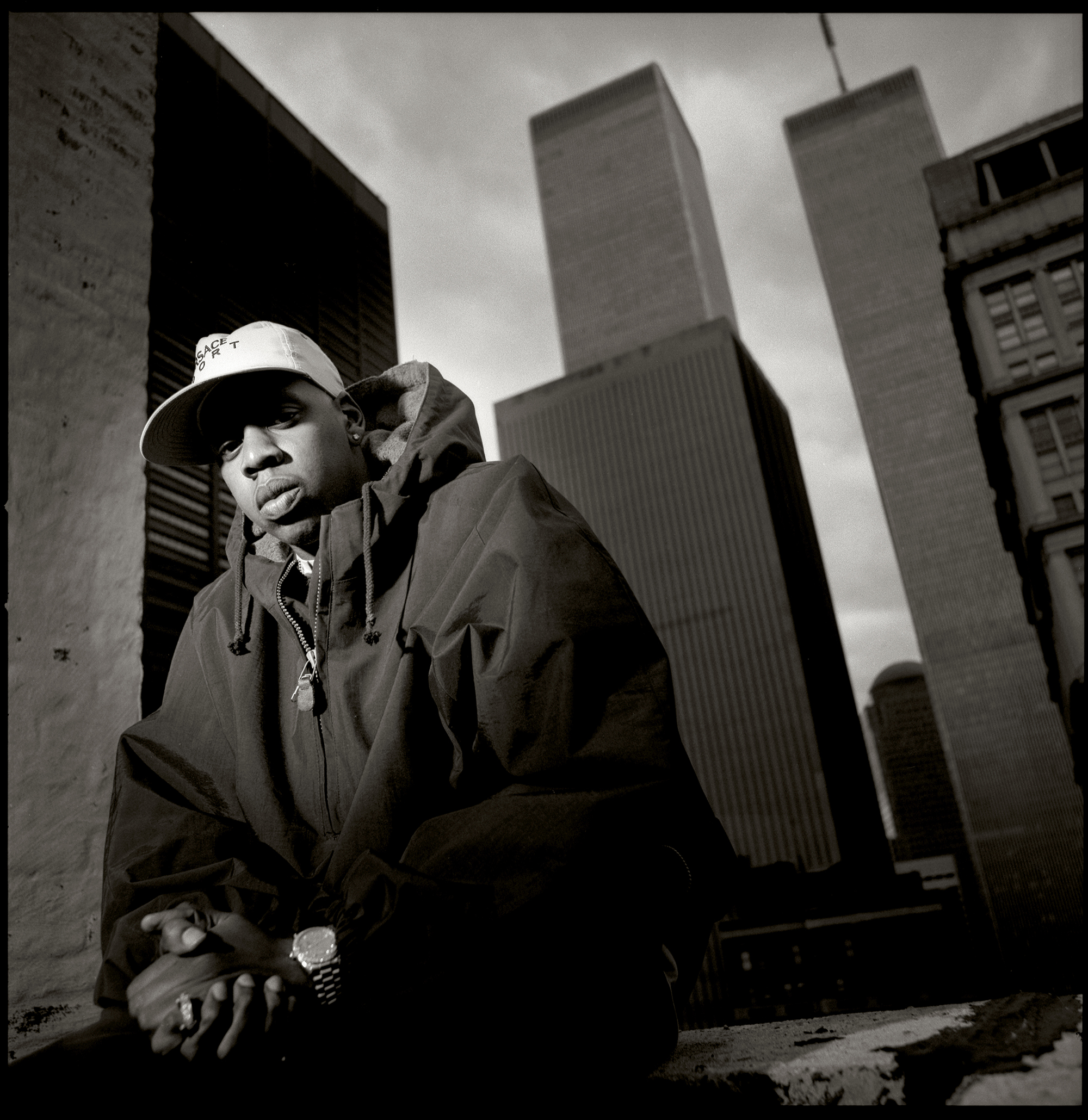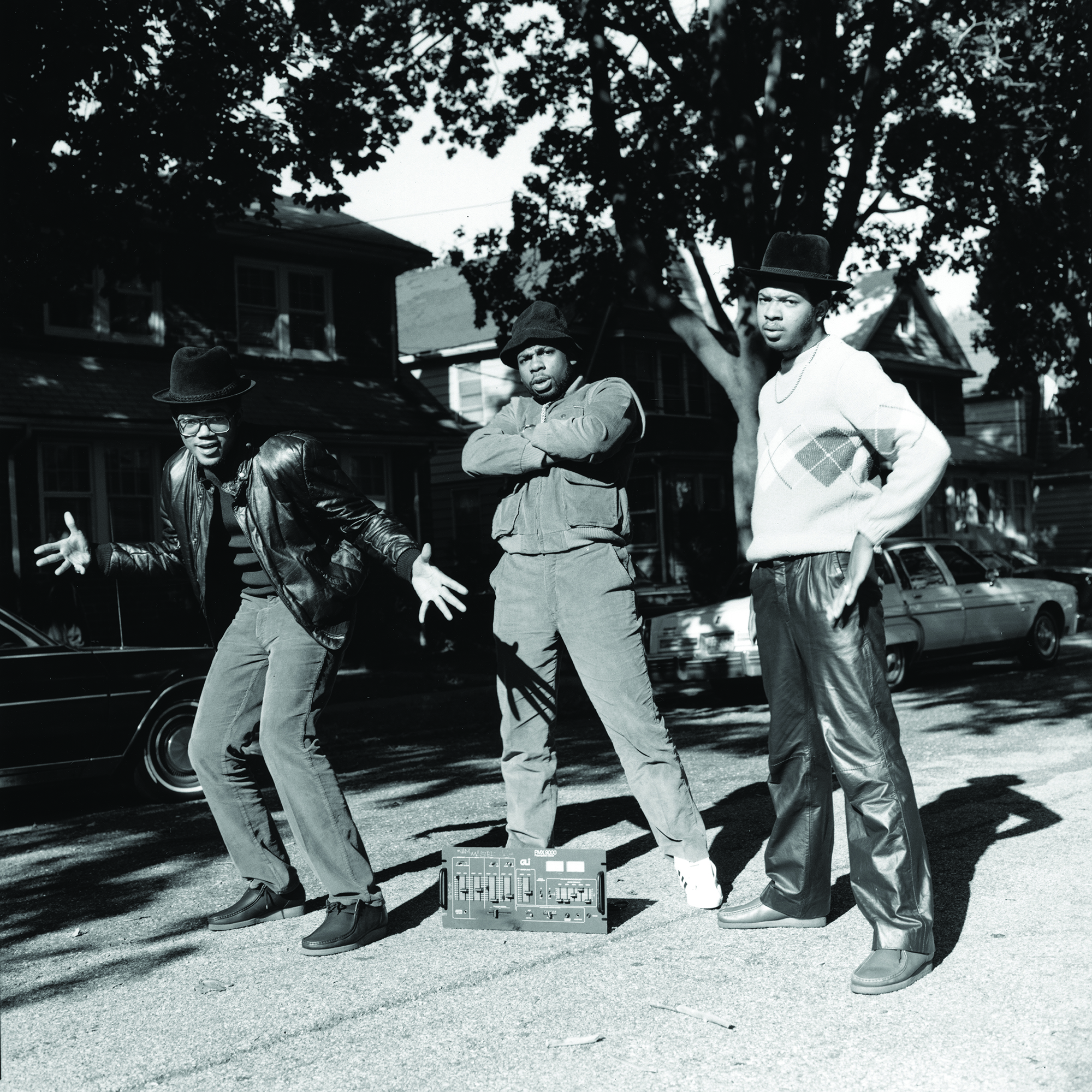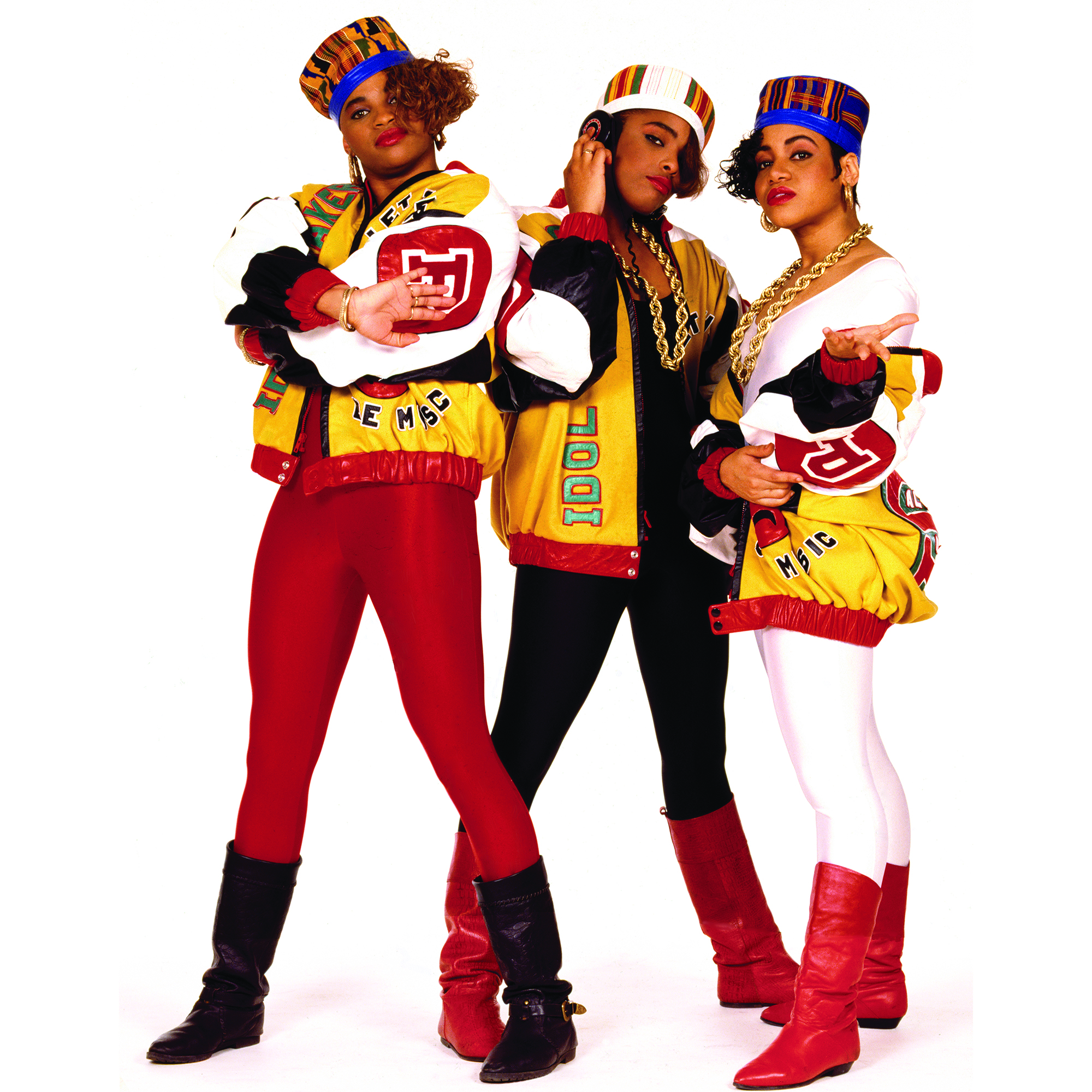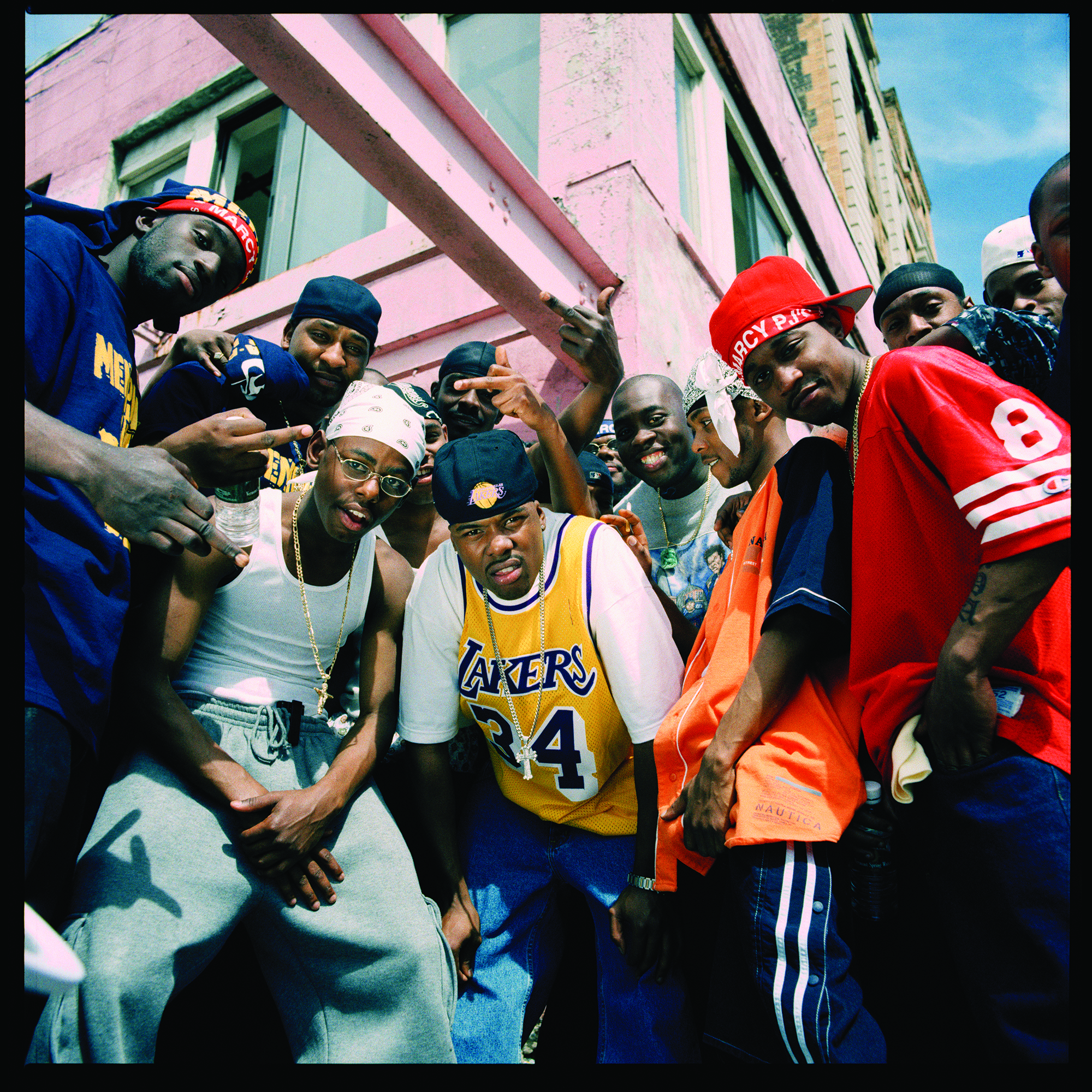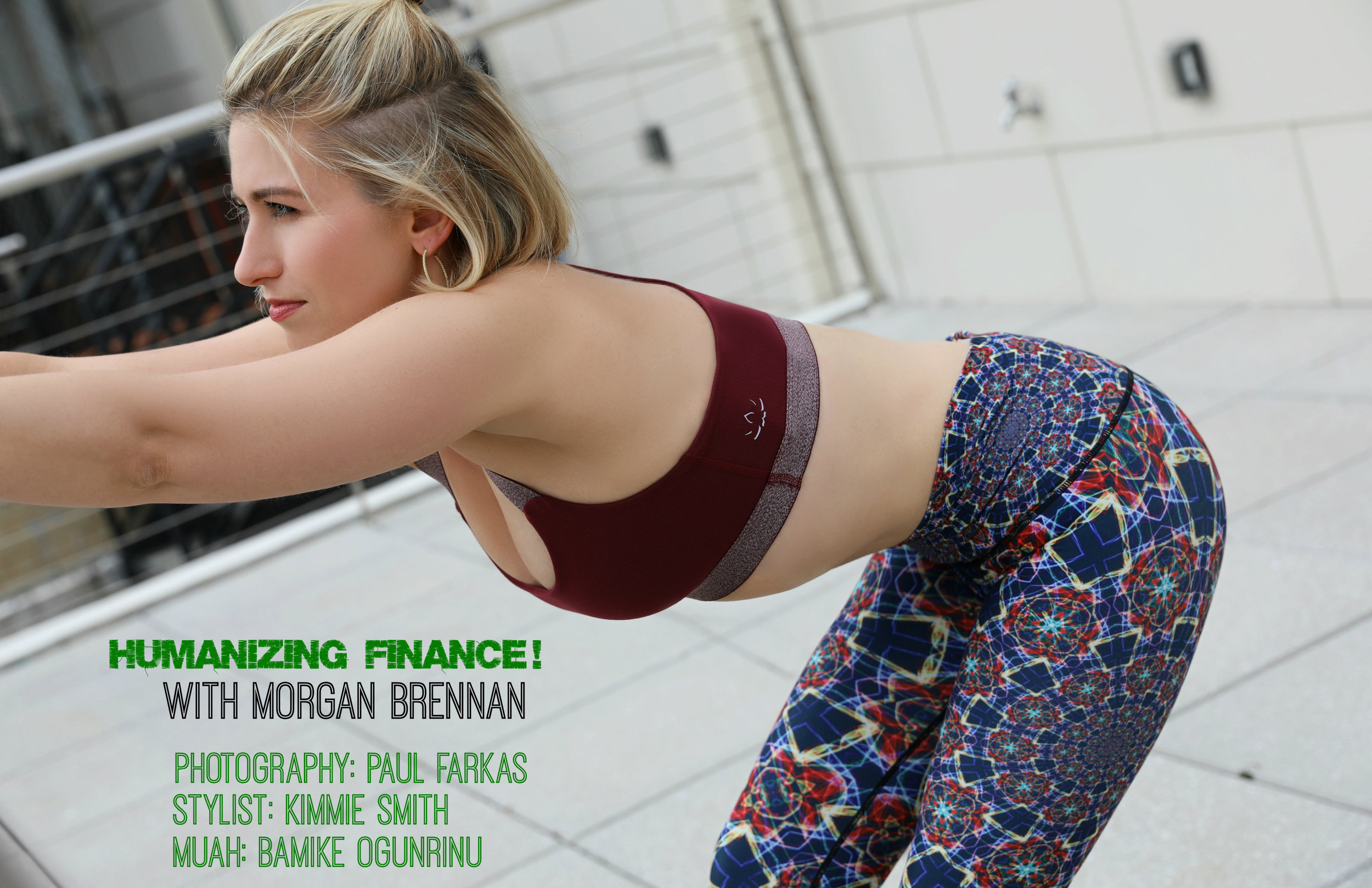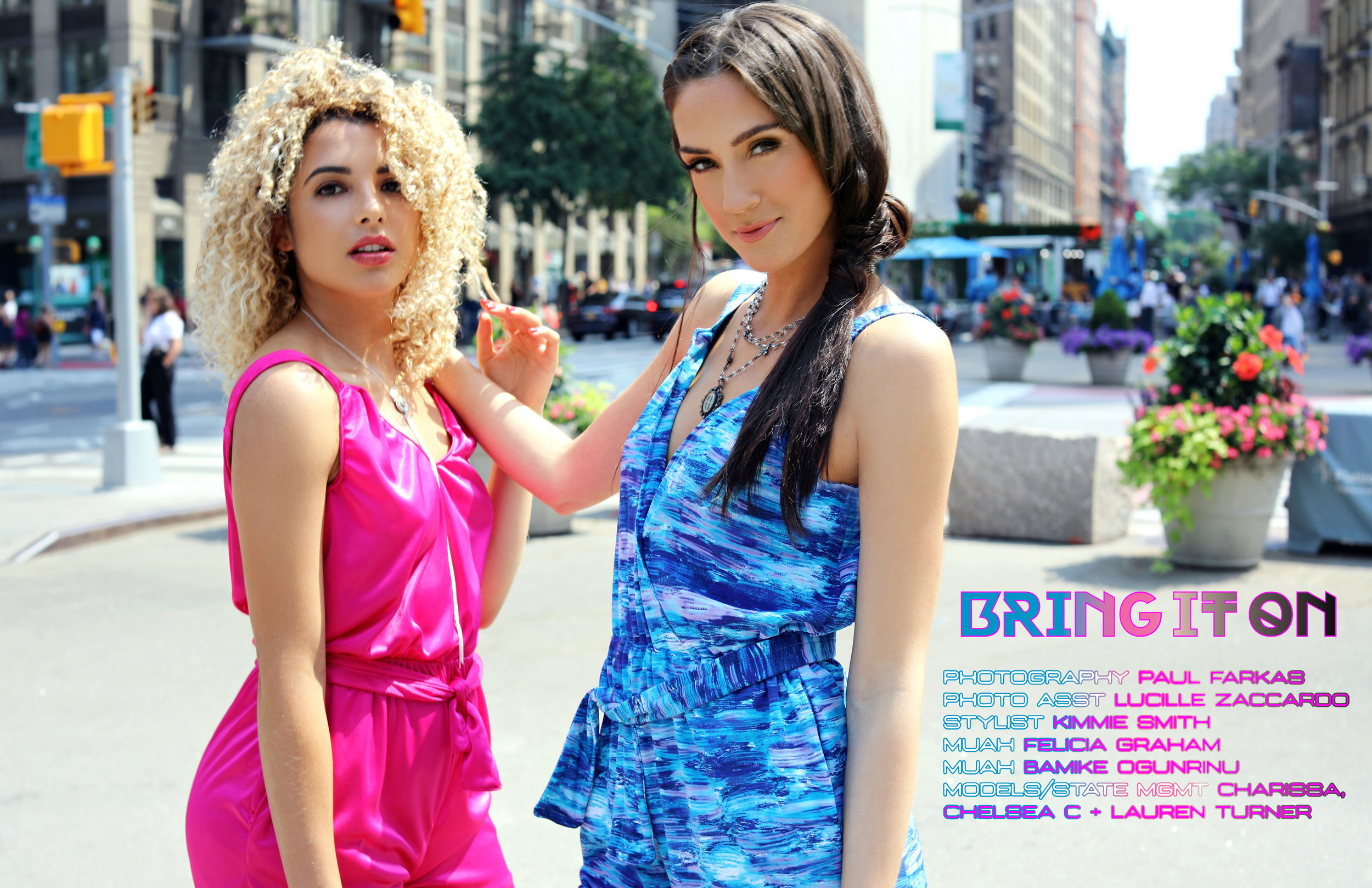AM: Core roots and aspects of athleisure are steeped in Hiphop style and culture. We love seeing Adidas, Kangol, Dapper Dan, and an array of other iconic fashion and culture laced throughout the images and contact sheets. What are some stories that the photographers and essayists offered about Hiphop style from the early days to rising to mainstream as a truly dominant and global authoritative stature?
VT: The whole phenomenon and athleisure wear and just comfort was really something that started in Hiphop, absolutely. Young kids were very aspirational in wanting certain sneakers or wanting a certain look, but at the same time this was all super personalized and all flipped on its head to have a very unique look and feel that was very Hiphop. So they started trends, they started a lot of the sneaker culture that you see right now: Run DMC and Adidas, the whole Nike Air Force 1 movement. A lot of even little details like the baggy sweatsuits, the caps, all that kind of stuff was very much self-styled and sort of remixed, if you will, from mainstream fashion. To see it come 360 now and be thriving as mainstream fashion is really cool. All these elements that were originally just about being an individual are now available to everyone.
AM: Tell us more about your spotlight on the importance of telling the story of women and Hiphop in the book.
VT: It wasn’t really a decision to play it up in the book. For someone who has always worked in the industry (as a woman, obviously), writing about the music for years, women have always been a really strong part of Hiphop, both in front of the camera and behind it. I had so many incredible black women editors when I was a writer; so many women ran the label that I worked for: Lucia Cortez, Silvia Rowne, really powerful women. And then of course the artists….
People ask me a lot, “How did you find all the women photographers in the book?” They were there all along. It wasn’t an effort on my part to become equitable – I wish I could say it was, but it just is. To me it’s just been something that I recognized always, and I think it’s a little bit of a stereotype with Hiphop. If you look at Hiphop as a culture, women have always been super prominent.
Also, April Walker started Walker Wear, and a lot of people didn’t even realize she was a woman because Tupac and Treach from Naughty By Nature were her spokespeople. There was this big wave of streetwear entrepreneurs in the early ’90s, and she should really be commended as part of that: she and all the women stylists who gave Hiphop its look in terms of selecting baggy clothes for Mary J. Blige or a lot of the other looks. I think all those women deserve to be celebrated and remembered.
AM: What have you seen with having such a multi-dimensional audience by design as it cuts across music, Hiphop, photography, portraiture and selfies, as shown with such acclaim, like the dynamic Amazon chart success across categories?
VT: A lot of people say Hiphop is now post-genre, so there’s not just one kind of Hiphop, there’s not just one kind of listener or audience. Hiphop now is global on all levels – it’s not just the subculture in a neighborhood anymore. The elements of it have been appropriated. That’s a loaded word; I guess a better word would be integrated into all facets of fashion and music. Kids in the suburbs listen to it, everyone listens to it, but at its core it will always be a music that speaks truth to power. That attitude will always come through in the photos, that attitude will always come through in the lyrics and all the different offshoot of any music culture. But now it’s a global phenomenon. Biggie has this line in one of his songs where he says, “You never thought that Hiphop would take it this far.” Indeed, a lot of people thought it was going to be a passing fad. It’s just really beautiful to celebrate the men and women who documented this culture that has not just stayed around but now defines many facets of our shared lives.
AM: It’s so interesting – and a treat – to get such an extensive intimate look at contact sheets and outtakes and see the interplay of photographers and artists in the creative journey together. What are some behind-the-scenes stories in the book about how the shoots started and went?
VT: Oh my goodness, I have so many. The one that people bring up most often is the story of Biggie in the crown that was taken by Barron Claiborne because it is a very stern-looking photo. The story behind it is that Barron was a young black photographer who was given the opportunity to photograph a fellow young black man and wanted to go against all the cliché imagery that he was seeing in the mainstream media at the time. He decided to photograph Biggie as a king. The editor of Rap Pages Magazine, a woman by the name of Dream Hampton, saw the importance of Barron’s vision of portraying someone like Biggie as royalty. In fact, that photo was called King of New York. The photo almost didn’t happen because Puffy/Diddy, who was leading Biggie’s career at that time, thought that he would kind of look like Burger King. So there was a lot of behind-the-scenes back-and forth, and it was interesting to hear the “this classic photo almost didn’t happen” accounts. I really like that photo for sure. I would say that’s a really good story.
AM: What are some accounts from the photographers about their work at that time? What cameras and gear were they shooting with, and did they comment about how it impacted the look and feel of their work and narrative?
VT: A lot o f big photographers – Janette Beckman, Danny Clinch – love shooting with medium-format Hasselblads. Lugging medium-format cameras around different neighborhoods, on the subways, is a little more challenging. But they always said it was very worth it. Not only did they produce this very beautiful, serious, historic moment, the Hiphop artist also felt that way. Janette Beckman shares the story about when she showed up in Hollis, Queens to photograph Run DMC. She had brought her Hasselblad on the subway from Manhattan way up to Queens. When she showed up, they understood that she was serious – not just here to take a few snapshots of us but here to really photograph us. Same goes for Danny Clinch for the Big L album covershot taken in front of his stoop in Harlem. Same thing. I feel like the photographers loved using Hasselblad medium-format because it set the tone.
AM: What have you heard from newer photographer fans, who love seeing contact sheets and negatives as a secret workflow?
VT: In digital culture, Instagram, imagery in general is very disposable in many ways, and we’re also bombarded with a lot of it. For younger fans, it’s often hard to imagine a world where you didn’t see the photo instantly or where you didn’t erase any photos. They’re also used to seeing a lot of finished product. The concept of contact sheets is important because it shows the stakes and it shows growth and it shows the artist in an imperfect setting and it shows the photographer working their process out, their creative process of trying to get the lighting right or not quite getting one out of 36 photos or one out of 12 photos right if you’re shooting medium-format.
So for young people, they see that the process takes time, and a lot of mistakes were made. That’s really important in this day and age. I think they really appreciate it - seeing photos of a young Kendrick Lamar in the studio where he looks kind of tired or frustrated recording his debut album. It’s a different Kendrick Lamar than the Pulitzer Prize winner with this amazing album on the other side of the process. So young people are really loving it. Also, just picking up on all those great style elements of the early days. A lot of it has definitely come back, and a lot of younger fans don’t even realize it’s been around for years and years.


